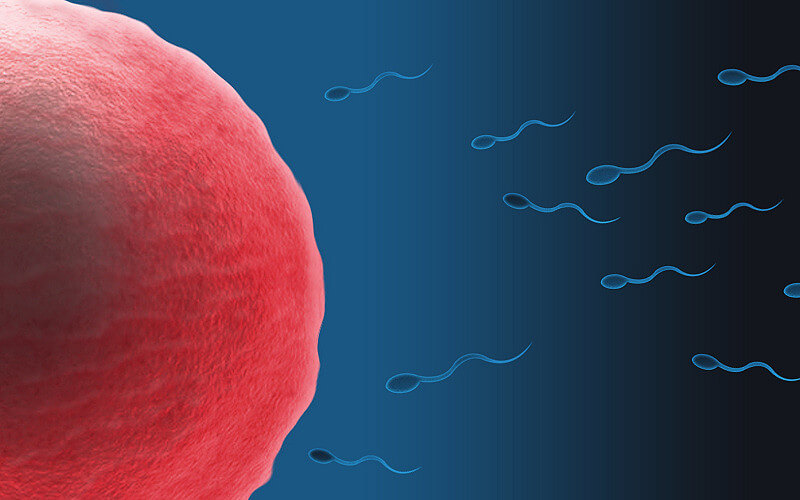Conception – nature or nurture?
Most of us have heard of IVF and most parents are fortunate enough to conceive without intervention. Thankfully for the minority who do struggle to conceive naturally, there are a number of medical techniques available which can result in the conception and delivery of happy, healthy children. One of these is IVF, or in vitro fertilisation.
What is IVF?
IVF is an assisted reproductive technology (ART) which offers an alternative route to natural conception. Common infertility problems eligible for IVF include: blocked fallopian tubes, low sperm count, premature ovarian failure, uterine fibroids, and unexplained fertility problems.
What happens?
An egg is extracted from the womb, and a sperm sample is obtained. Under laboratory conditions they’re manually combined. The fertilised egg is then transferred back in the uterus, and from this point on it’s hoped nature will take its usual course.
What happens - In detail
- Medication plays an important part in IVF. First of all, you’ll be given medication to suppress your natural menstrual cycle for a period of two weeks. This may be either a daily injection or a nasal spray.
- The next stage is fertility medication to stimulate egg production. IVF is a finely balanced procedure and requires production of multiple eggs, as some eggs won’t respond to either retrieval or fertilisation. The FSH (follicle stimulating hormone) is injected daily for a period of ten to 12 days.
- You’ll be carefully monitored during this period – you’ll have a transvaginal ultrasound to examine your ovaries and you may also have a blood tests to check your hormone levels.
- About 34-38 hours before your eggs are due to be retrieved, you’ll have a final hormone injection to help them mature.
- Retrieval is a minor surgical procedure which uses a hollow needle to extract the eggs from your ovaries. You’ll be sedated for about 15-20 minutes to reduce discomfort while your eggs are retrieved.
- Once your eggs are collected, you’ll be given a hormone medicine (either an injection, a pessary or a gel) to help prepare the lining of your womb to receive the embryo.
- The sperm sample is also collected and prepared for insemination.
- The eggs and sperm are then manually combined and stored under laboratory conditions for a period of time to see if fertilisation takes place. It’s not uncommon for a single sperm to be injected directly into your eggs (an introacytoplasmic sperm injection or ICSI) if the chances of fertilisation seem low.
- Once fertilisation takes place, embryos are grown in the lab for up to six days and then the best ones are selected. Transfer takes place using a catheter or small tube which is inserted into your womb. This is generally painless although you might experience some mild cramping, a bit like period pain.
How long does IVF take?
The actual process of retrieval, fertilisation, transplantation and implantation takes between six and ten days after the eggs are first retrieved. But because the eggs need a few weeks to mature after medication, one cycle of IVF itself takes around 4 to 6 weeks.
Am I pregnant?
After IVF, you’ll have to wait about two weeks before you have a pregnancy test. This will either be the traditional urine test done at home, or you may be asked to attend your fertility clinic for a blood test. If you are pregnant, you’ll be monitored for a few weeks with ultra sound scans to check the pregnancy is progressing normally. If all is well you’ll be given the usual ante-natal care offered to expectant mothers.
Possible side effects
If you’re considering IVF, you should be aware of the possible side effects that you might experience after the procedure. These include:
- clear or blood-tinged discharge
- mild cramping
- bloating
- constipation
- tender breasts
The fertility medication can also induce side effects such as headaches or mood swings, hot flushes (similar to menopausal flushes), abdominal pain or bloating. A more serious side effect is ovarian hyper-stimulation syndrome (OHSS). With OHSS, side effects can include:
- nausea or vomiting
- shortness of breath
- a decrease in urine production or frequency of going to the loo
- faintness
- severe abdominal pain and bloating
- significant rapid weight gain
Thankfully OHSS is rare, but if you do experience any of these symptoms, you must contact your doctor immediately.
Other potential risks
- The process of egg retrieval can result in bleeding, infection and damage to the bowel or bladder.
- Like many fertility treatments, IVF increases the chances of a multiples pregnancy – which of course carries its own risks such as premature delivery and low birth weight.
- The risk of miscarriage increases with maternal age.
- There is also a slightly increased risk of ectopic pregnancy with IVF.
Is IVF available to everyone who is having problems conceiving?
The Natural Institute of Care Excellence recommends that women under 40 should be offered three cycles of IVF treatment on the NHS (this is now the case in Scotland) if they have failed to conceive naturally after two years of trying or after twelve cycles of artificial insemination. If you don’t fall into these categories or you have had all the available free cycles, you will need to seek private paid for medical services.
Further treatments
If you’ve done your homework, you’ll know that IVF has a variable success rate. Do prepare yourself for the possibility that your treatment may fail. Lots of people whose initial IVF treatment fails, try again and go on to have happy, healthy babies. You’ll find lots of counselling and support groups out there to help you if you need additional support on your IVF journey.
If you have any questions about this blog or would like to discuss IVF or fertility medication, please do not hesitate to contact us and speak with Dr Lifson.


Recent Comments